Expo 2025 Osaka is in full swing, and visitors from around the globe are immersing themselves in the innovative and captivating pavilions that dot the Yumeshima landscape. With so much to see and experience, it can be overwhelming to decide where to start. We’ve scouted out some of the most remarkable pavilions at Expo 2025, offering a sneak peek at the must-see destinations that are leaving a lasting impression on visitors.

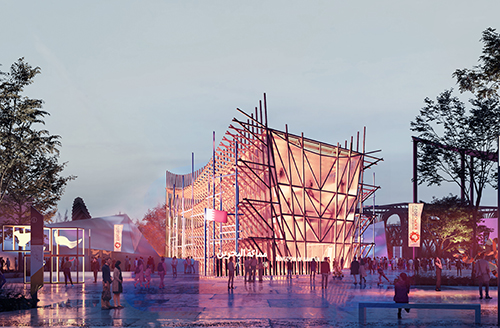
Bahrain Pavilion by Lina Ghotmeh
Designed by Lebanese architect Lina Ghotmeh, the Bahrain Pavilion at Expo 2025 Osaka stands as a testament to the Kingdom’s profound maritime heritage. The pavilion, inspired by the traditional Bahraini dhows that once crisscrossed the seas, presents a visual representation of the enduring connection to the ocean. Its form evokes the spirit of these vessels, suggesting a journey through time and tradition.

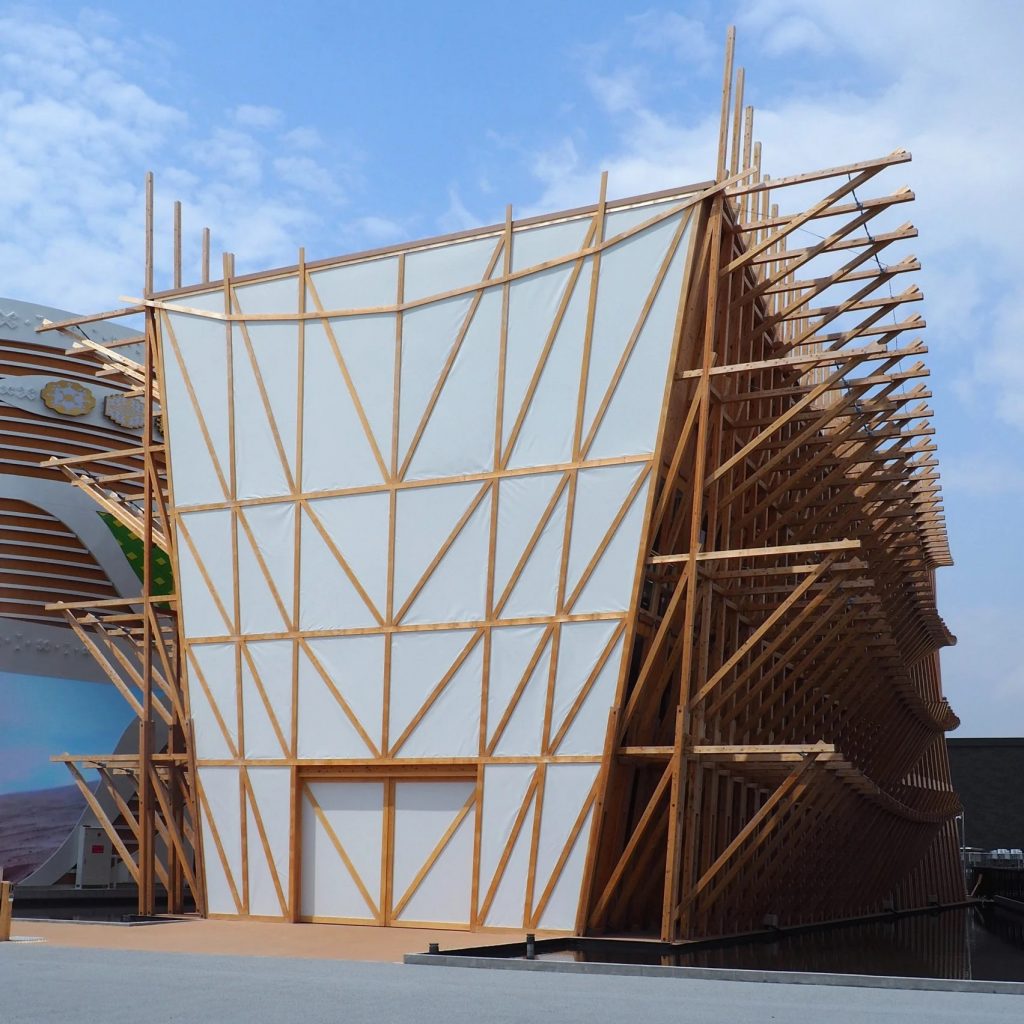
Bahrain Pavilion by Lina Ghotmeh
Nestled in the “Empowering Lives” zone, strategically positioned to face Osaka Bay, the Bahrain Pavilion marries Bahraini boat-building techniques with Japanese wood craftsmanship. This blend symbolizes the strong bilateral relations between the two nations. The attention to detail and integration of distinct cultural elements creates a unique and captivating space.
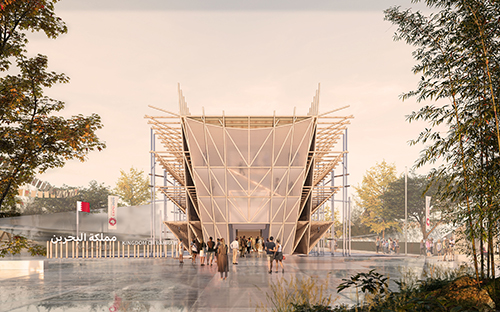
Bahrain Pavilion by Lina Ghotmeh
The core experience lies within the “Connecting Seas – A Journey Through the Senses” exhibition. This immersive journey transports visitors through Bahrain’s history, showcasing its transformation from a pivotal port of trade to the vibrant, modern destination it is today. The exhibition explores Bahraini culture, its resilience, and its connection to the sea. The pavilion offers a chance to observe architectural and cultural design.
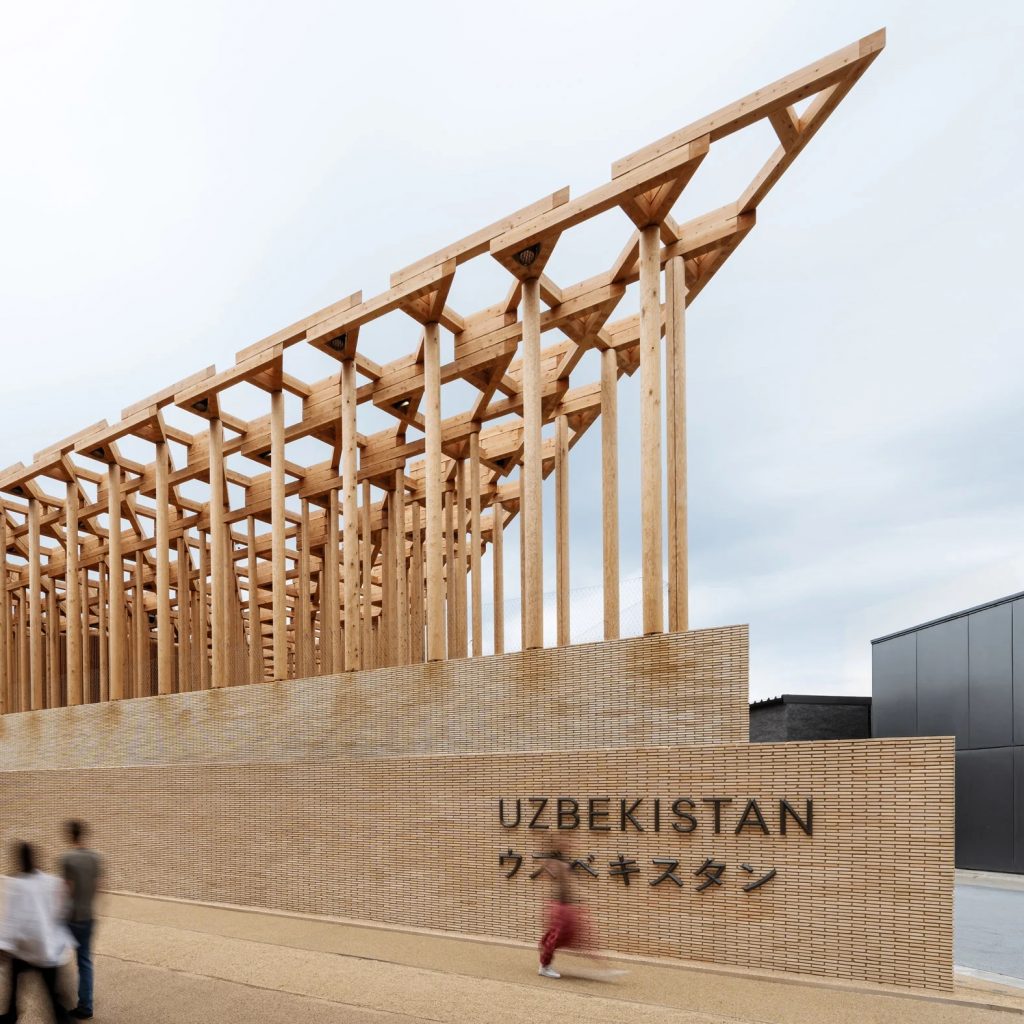
Uzbekistan Pavilion by Atelier Brückner
Despite occupying one of the smaller plots at Expo 2025, the Uzbekistan Pavilion, designed by Atelier Brückner in collaboration with the Uzbekistan Art and Culture Development Foundation, makes a significant impact. With its theme, “Garden of Knowledge: A Laboratory for a Future Society,” the pavilion provides a compelling glimpse into Uzbekistan’s heritage, contemporary innovations, and dedication to the Sustainable Development Goals. The design balances reverence for the past with an embrace of the future, creating a unique space for exploration and learning.


Uzbekistan Pavilion by Atelier Brückner
The pavilion’s architectural design mirrors its core theme. The structure comprises two distinct levels: a base clad in reclaimed bricks sourced from across Japan, symbolizing the earth, and an upper level formed by a cluster of wooden columns, evoking a lush forest or garden. This visual metaphor represents knowledge growing from the ground up. Furthermore, the exterior incorporates symbolic patterns drawn from Uzbekistan’s rich embroidery, ornaments, and traditional designs, providing a visual introduction to the nation’s cultural identity.
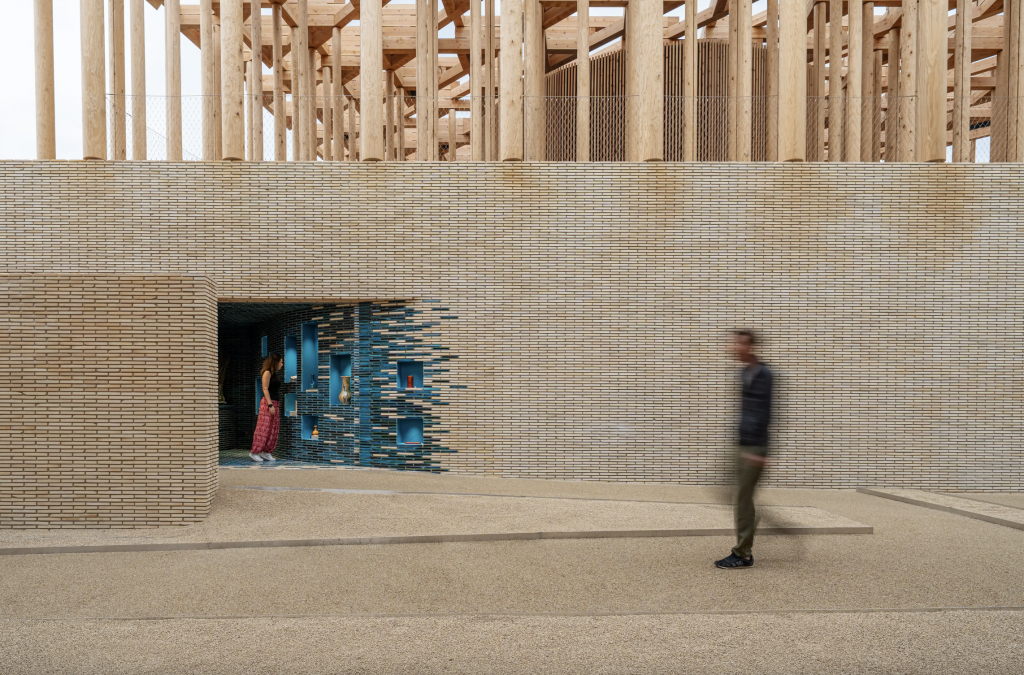

Uzbekistan Pavilion by Atelier Brückner
Inside, the pavilion is carefully organized into three sections: education, innovation, and clean energy. Each area showcases Uzbekistan’s commitment to a sustainable future. A highlight of the exhibition is the “incubator,” a moving and illuminated platform that guides visitors on an immersive journey through the pavilion. Inspired by the caravanserais that once dotted the Silk Road, the Uzbekistan Pavilion offers a space for exchange and discovery.
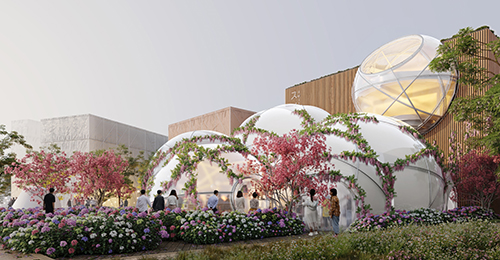
Switzerland Pavilion by Manuel Herz Architects (also header image)
Designed by Manuel Herz Architects, the Switzerland Pavilion at Expo 2025 Osaka sets a new standard for environmental responsibility, embodying the themes of “Life,” “Planet,” and “Augmented Human” with a steadfast commitment to minimizing its ecological footprint. The design intentionally interweaves nature and culture, blurring the lines between natural and built environments. Lightweight, spherical structures clad in plastic cascade down the facade. According to the studio, it is represents “a building that is embedded in nature”, aiming to showcase how natural and man-made worlds can coexist. Switzerland aims to achieve the smallest ecological footprint of all previous Swiss pavilions, showcasing a dedication to sustainability that goes beyond mere aesthetics.
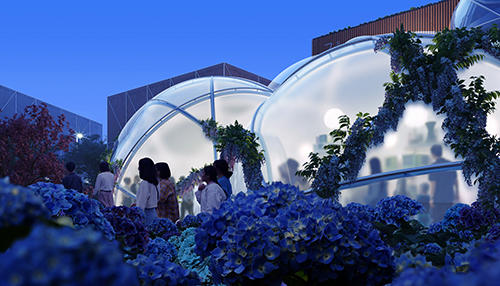
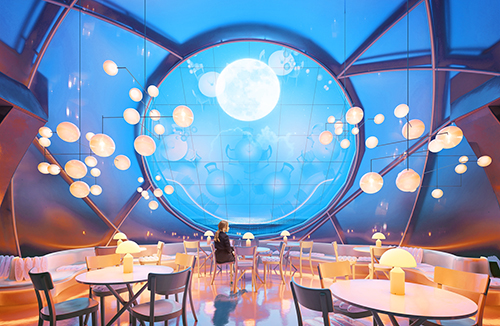
Switzerland Pavilion by Manuel Herz Architects
The pavilion achieves its ambitious goals through a series of innovative design choices. Its lightweight construction, including a double-chamber foil structure for the exhibition area, is fundamental to reducing its environmental impact. The exhibition space is situated at ground level, eliminating the need for elevators or escalators, furthering its commitment to efficiency. The most striking feature is the integration of nature, with plants that will eventually overgrow the spheres, grown in local nurseries. Every element is carefully considered to minimize its environmental impact and to encourage the adoption of sustainable practices.
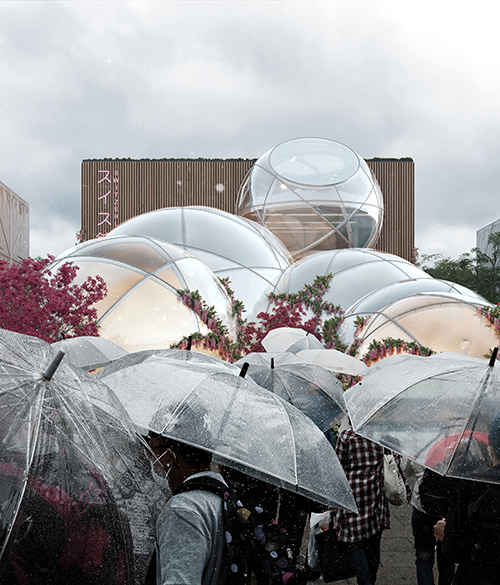
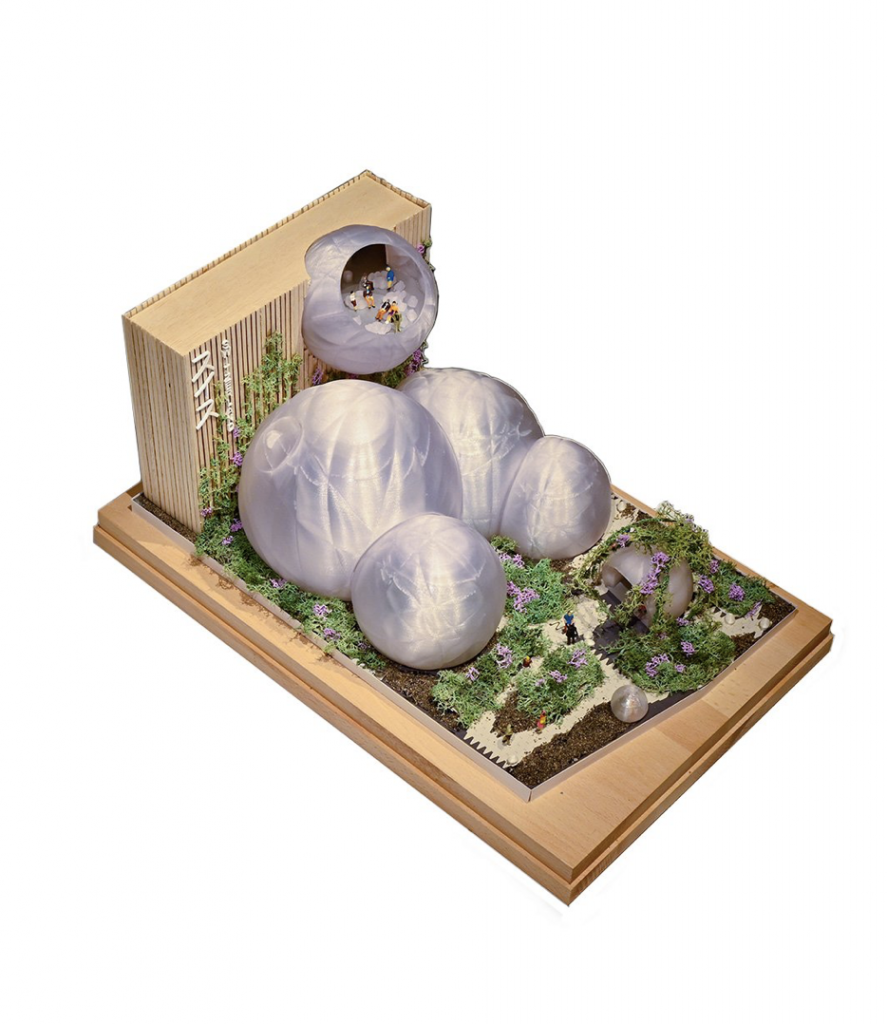
Switzerland Pavilion by Manuel Herz Architects
Beyond its innovative design, the Switzerland Pavilion highlights a dedication to a circular economy. The double-chamber foil is designed to have an afterlife after the Expo, and the entire pavilion is engineered for eventual recycling. It’s a bold statement – one that showcases Switzerland’s commitment to sustainability. It provides a valuable lesson on how design and architecture can contribute to a more sustainable future, making it a must-see destination for anyone interested in environmentally conscious innovation.